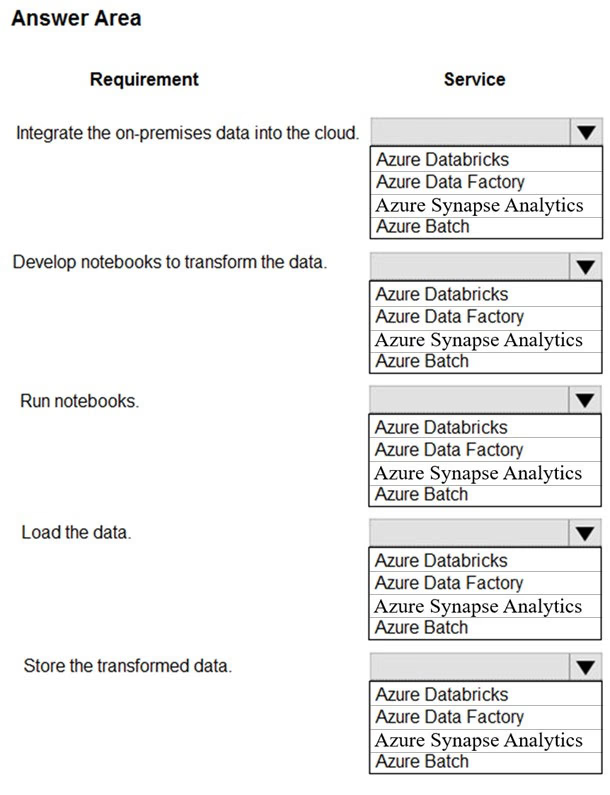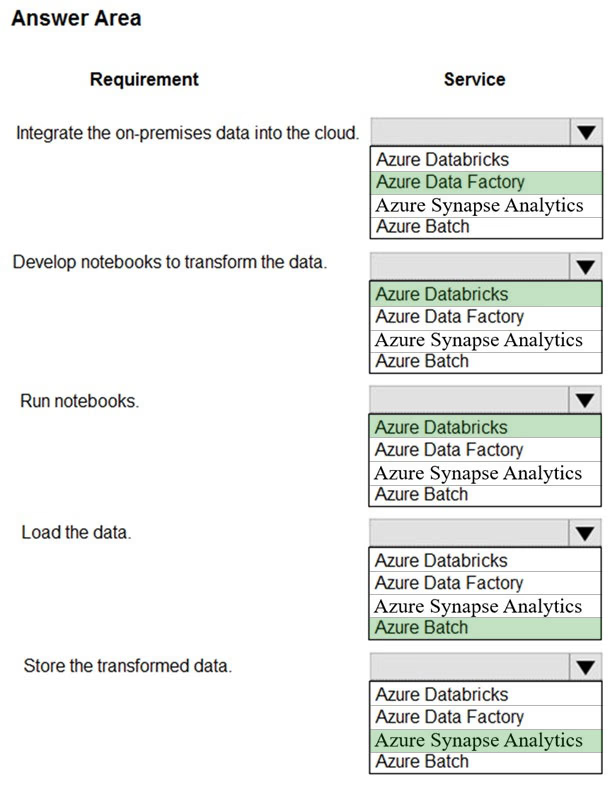HOTSPOT -
You design data engineering solutions for a company.
You must integrate on-premises SQL Server data into an Azure solution that performs Extract-Transform-Load (ETL) operations have the following requirements:
✑ Develop a pipeline that can integrate data and run notebooks.
✑ Develop notebooks to transform the data.
✑ Load the data into a massively parallel processing database for later analysis.
You need to recommend a solution.
What should you recommend? To answer, select the appropriate options in the answer area.
NOTE: Each correct selection is worth one point.
Hot Area:

